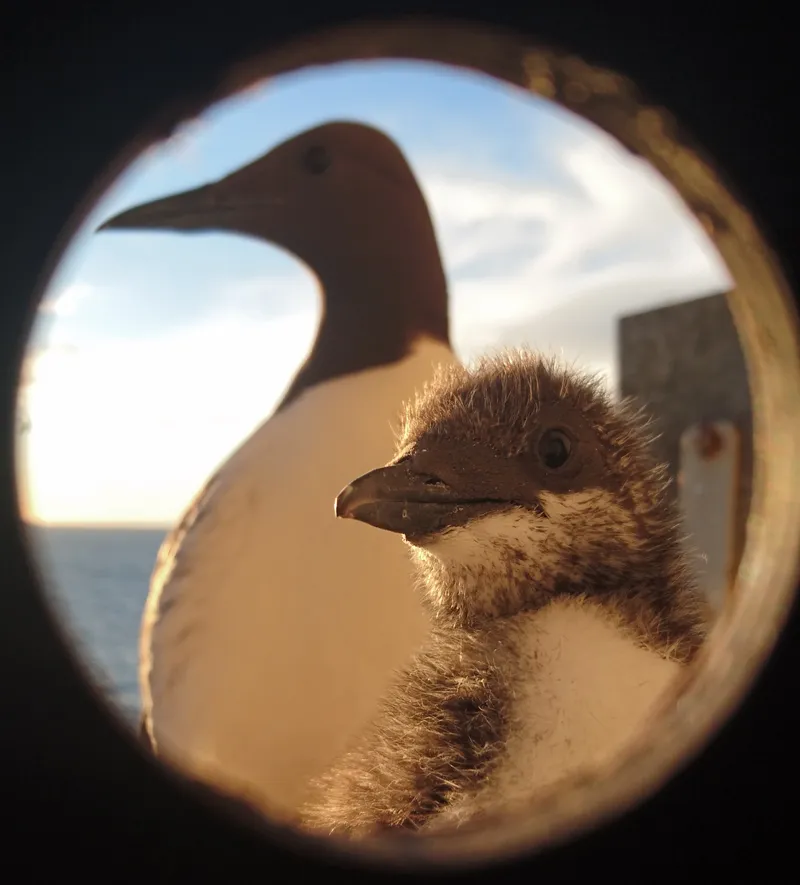Why We’re Listening In at the Auk Lab
The Auk Lab on Stora Karlsö is a cliff-edge observatory where Common Guillemots (Uria aalge) have been filmed, weighed and tracked for more than a decade years (Hentati-Sundberg et al., 2025). Cameras and sensors have already revealed how storms, heat waves and even eagle fly-overs shape breeding success. Guillemots never stop talking—courting partners, scolding neighbours, or begging for fish. With a new, continuous eight-channel audio system as well as integrated microphones in ten of the IP cameras, we can now hear the colony as well as see it, opening an acoustic window into the life of the Guillemots.
The soundscapes fill gaps the cameras leave. A sudden roar warns of an approaching eagle before the birds even flinch on screen, and synchronized sampling of the eight studio microphones may let us pinpoint which ledge a caller is standing on. Over the next seasons we hope to match individual voices to the colour-ringed birds on camera, turning every squawk into a data point.
The audio work is funded by Marcus och Marianne Wallenbergs stiftelse. The work done at the Auk Lab (now including audio) is part of the Baltic Seabird programme. Detailed methods and results after a decade of observations are in the 2025 progress report cited above. For regular updates on the audio research done at the Auk Lab please visit our project blog or browse our publications.

Micing up the Guillemot Colony at Stora Karlsö
In total we have 18 microphones (8 high-quality DPA, 10 camera integrated) covering 14 ledges. We have overlap at four ledges. This will let us compare the analysis possible with low quality vs. high quality audio, and it also acts as a fall back option for synchronization between the audio and video streams. The DPA microphones are connected to a Zoom F8 Pro field recorder and connected through USB to a Raspberry Pi that records the audio to a local USB drive (Recording Pi). The audio is then backed up to a NAS server by another Raspberry (Analytics Pi), which also monitors the health of the system and provides a web interface for monitoring. All data streams are syncronized with a GPS-disciplined NTP server (Clock Pi). The system is designed to run autonomously for months, with minimal human intervention.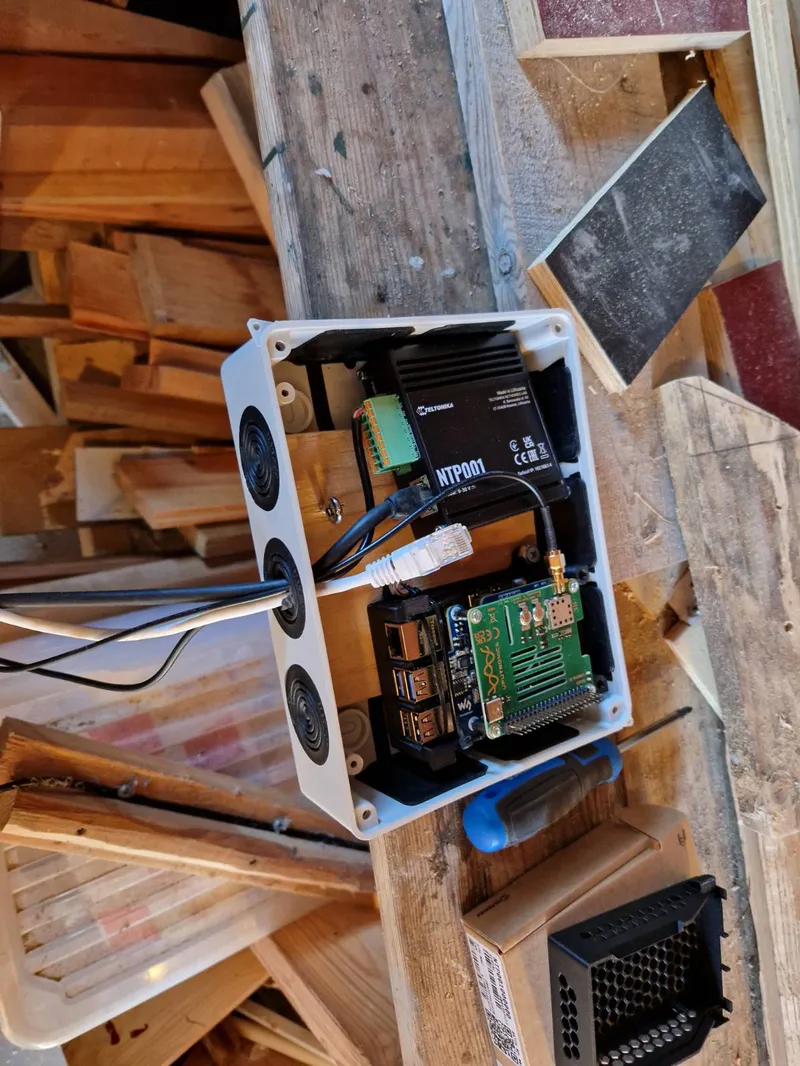
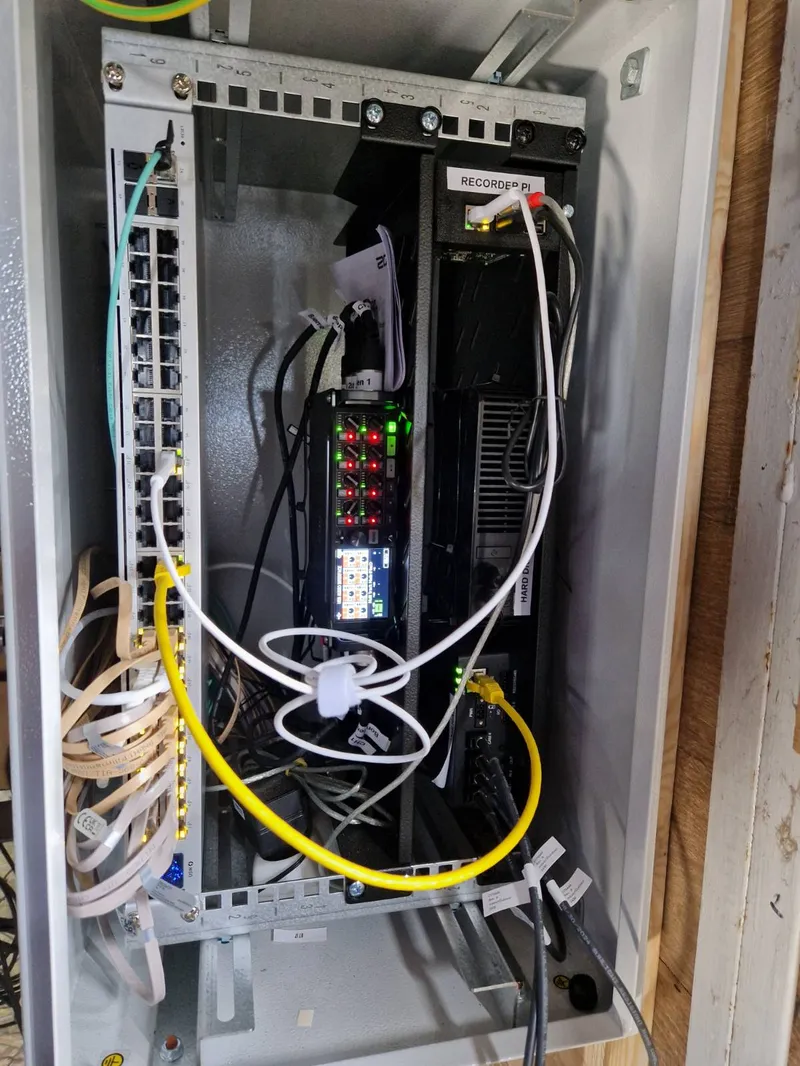
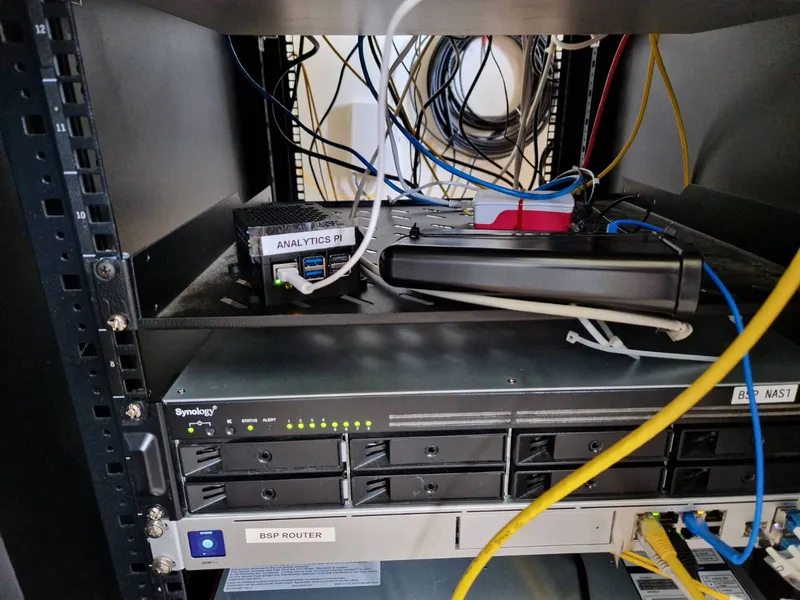
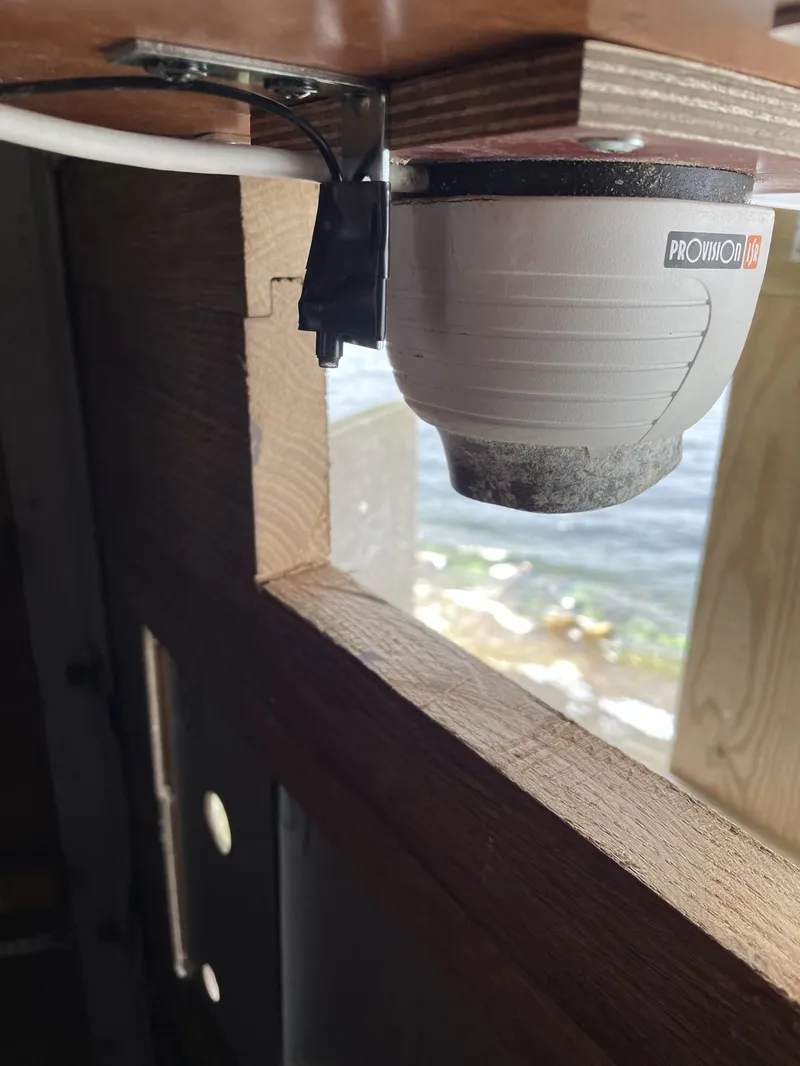
A GPS pulse per second feeds Clock Pi, turning it into a Stratum-1 NTP server. Every few seconds the two downstream Pis ask it for the correct time, so audio, video and sensor logs stay in sync. In addition to the Clock Pi, there is a backup Teltonika NTP0001 server that will take over if the Clock Pi fails.
Inside the Auk Lab the Recording Pi sits in a rack and records the eight Zoom channels into 10 minute long RF64 files on a USB drive. Fifty meters away in the server room, the Analytics Pi watches the directory via SSHFS. When a file stops growing it syncs the file to a NAS over NFS. The success of the transfer is verified by a checksum, and logged in a log file on the Analytics Pi. All raspberries keep their own health check logs which are pooled by the Analytics Pi at certain intervals, and a daily summary is pushed to a webpage. The result is a chain of custody that runs for months without human intervention.

The Audio Team
This project brings together a diverse team of experts, ensuring a robust and comprehensive approach:
- Jonas Hentati Sundberg (SLU): Extensive experience in seabird research and ecology, particularly with Guillemots, and using AI for biodiversity monitoring.
- John Martinsson (RISE): Expertise in machine learning for audio analysis, focusing on bioacoustics and biodiversity monitoring. Developing tools for automated species detection using machine learning.
- Delia Fano Yela (RISE): Expertise in signal processing, machine learning, and music information retrieval, particularly in sound source separation. Current work focuses on ethical AI practices.
- Olof Mogren (RISE): Lead researcher in deep learning for environmental problems with extensive experience in machine learning and climate change applications.
- The wonderful people at the Auk Lab: Saga Kynman, Sarah Morrow, Per-Arvid Berglund, Aron Hejdström, Juho Könönen who has helped with the installation.
A Decade of Data, and We’re Just Warming Up
The 2025 report shows how automated scales, infrared cameras and RFID tags have already changed what we know about seabird timing and survival. With sound, behaviourists can also test whether stressed colonies get noisier, whether parents announce fish sizes, or whether mates recognise each other’s voices across seasons.
All recordings will feed open machine-learning models, making the Auk Lab a genuinely multi-modal field station where every click and flutter is logged.
Follow the Project
We publish code, schematics and fresh observations on GitHub and in the project blog. Also, daily summaries of the audio recordings are available on the Auk Lab Audio summaries (system deployed at 2025-04-29, summaries before this are not valid).
Open Source Code
All core components of the AukLab-Audio system are developed and maintained as open source. This includes the full audio and video recording pipelines, system health monitoring tools, synchronization setup, and data management scripts.
- Audio System Code: Recording and backup software for the Audio System.
- Audio-Visual System Code: Configuration and recording scripts for the Audio-Visual System.
Contributions, feedback, and issue reports are welcome via GitHub. As the project grows, additional tools for annotation, analysis, and dataset curation will also be published.
References
- Hentati-Sundberg, Jonas and Berglund, Per-Arvid and Olin, Agnes B. and Hejdström, Aron and Österblom, Henrik and Carlsen, Astrid A. and Queiros, Quentin and Olsson, Olof (2025). Technological evolution generates new answers and new ways forward: A progress report from the first decade at the Karlsö Auk Lab. Marine Ornithology, 53(1), 21--33. DOI: 10.5038/2074-1235.53.1.1612.

